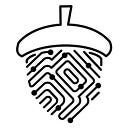Hydroponics.ai — the future of farming
Over the past two weeks, my team (Mathure Uththerakunaseelan, Luca Choterbosky, Helisha Shah and Rohan Battula) took part in the TeensInAI Accelerator.
We met on the first day of the Accelerator, where Elena had put us together in teams based on our personalities. We had not met each other before and, therefore, interacting with each other was awkward at first, but, after the ice-breaker, the conversation flowed smoothly.
In the first three days of the Accelerator we worked with the Innovation team at Accenture Liquid Studio who taught us about design thinking as a framework, helped us explore United Nations Sustainable Development Goals and decide on what our team wants to focus on. We were set with the task of producing a product that helped reduce the magnitude of the problems stopping the UN Sustainable Development Goals from being achieved. The three that we were encouraged to focus on were: quality education, climate action and good health and well-being, although we could focus on any other pressing issues if we wanted to.
As a team and with Sondess (our mentor for the day), we brainstormed different problems that we could potentially reduce, coming up with knife crime, climate change and education inequalities. Initially, we wanted to focus on knife crime in London as the number of these crimes are increasing every year, making it a critical problem. However, we realised that any solutions that we came up with would not be effective enough and that we were struggling to come up with how to make our product tackle knife crime in a way that wasn’t already being done.
The next day we were joined by Peter and Diana (our other mentors) and we decided to explore a wider range of problems by looking at all the UN Sustainable Development Goals. We decided on looking at climate change and zero hunger. After more research, our team discovered that the agriculture industry was quite inefficient, especially with the wastage of resources. Peter mentioned that we should explore aquaponics; a method of growing plants using fish waste to fertilise the plants growing in the water. However, we decided against this as we realised that many people may not be able to have the fish and equipment needed, may it be for space or for money reasons. Instead, we researched hydroponics; a method of growing plants in water that contains dissolved nutrients (this was also introduced to me in GCSE geography, which I was interested in since then). Hydroponics is much more effective than conventional farming as it produces a 350% yield increase per unit of land, uses 90% less water and 75% less land.
In addition to this, we also found out that there were many problems in regards to hydroponics. The following days were then spent contacting hydroponic farmers across London. Whilst we were there turned down quite a few times, a handful were happy to talk to us about obstacles that they face when growing their plants hydroponically. One farmer mentioned that controlling the water temperature was a big problem as it caused root rot and we then focused on creating an AI that optimised the conditions constantly so that the plants could grow much faster. After more research, we also found out that light levels and electrical conductivity levels (amount of nutrients in the water) were crucial to control. Furthermore, there was only one product in the market that completed a task similar to the one that we hoped to do, but it only monitored the conditions and did not regulate them like our product will do.
After that, our team conducted a literary review focused on finding the optimum conditions for plants to grow in and the equations needed to create our simulation. We had to do this as there were no existing datasets for our AI to work with and we, therefore, had to create a simulation that recreates the conditions in a hydroponics farm. Moreover, we had to create a physical set up of a mini hydroponics farm so that we were aware of how to use the sensors and components when programming our AI. This was completed in Peter’s lab, where we connected all of the components to the Pi Zero.
The last two days were then used to prepare our pitch. We listened to Anthony from Enterprise Academy give us a talk that advised us on how to create a pitch deck that worked well with our product and what we wanted to say in our pitch. We then created our pitch deck and prepared our lines for demo day.
As out pitch neared, our nerves increased exponentially but our pitch went smoothly. We described the problem (inefficiency in farming and growing population, which causes a global food crisis) and explained how our product helps solve this. The judges questioned us on future partners, how to ensure that our product works without WiFi (to which Luca replied ‘a bunch of if statements’) and various other things. To our surprise, we had won many prizes, including speaking at an AI conference, many chances to pitch our product again and the opportunity to report our findings into a paper that is going to be submitted into a major AI conference.
We’re shaping the world with AI, building the future of farming.
